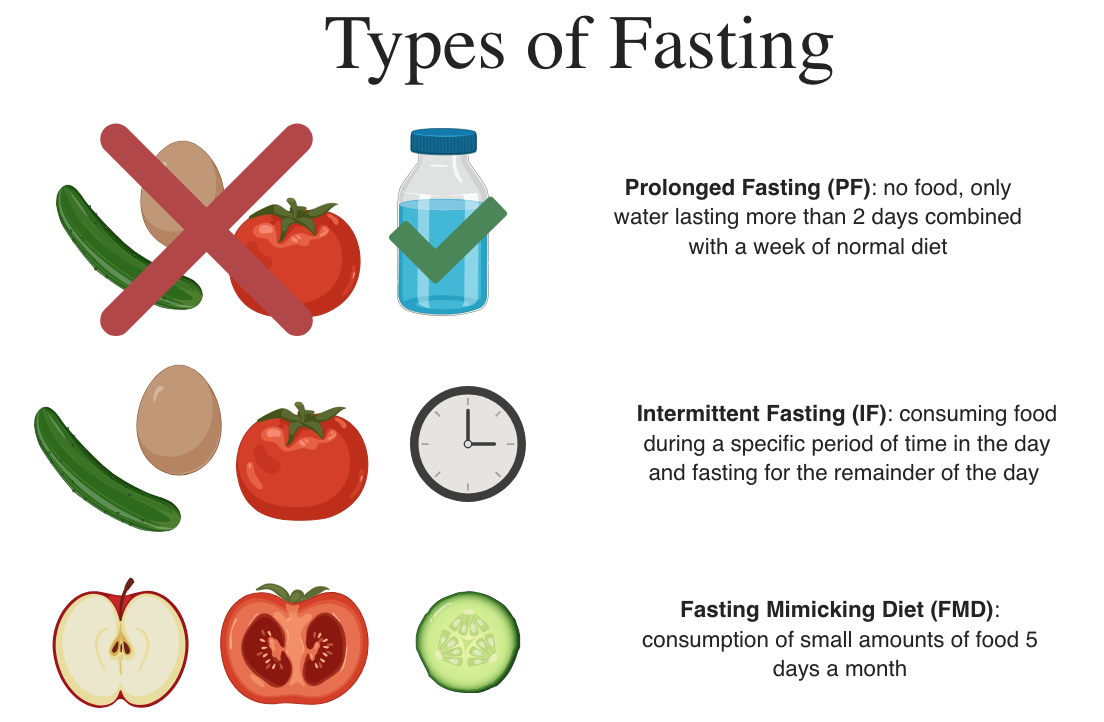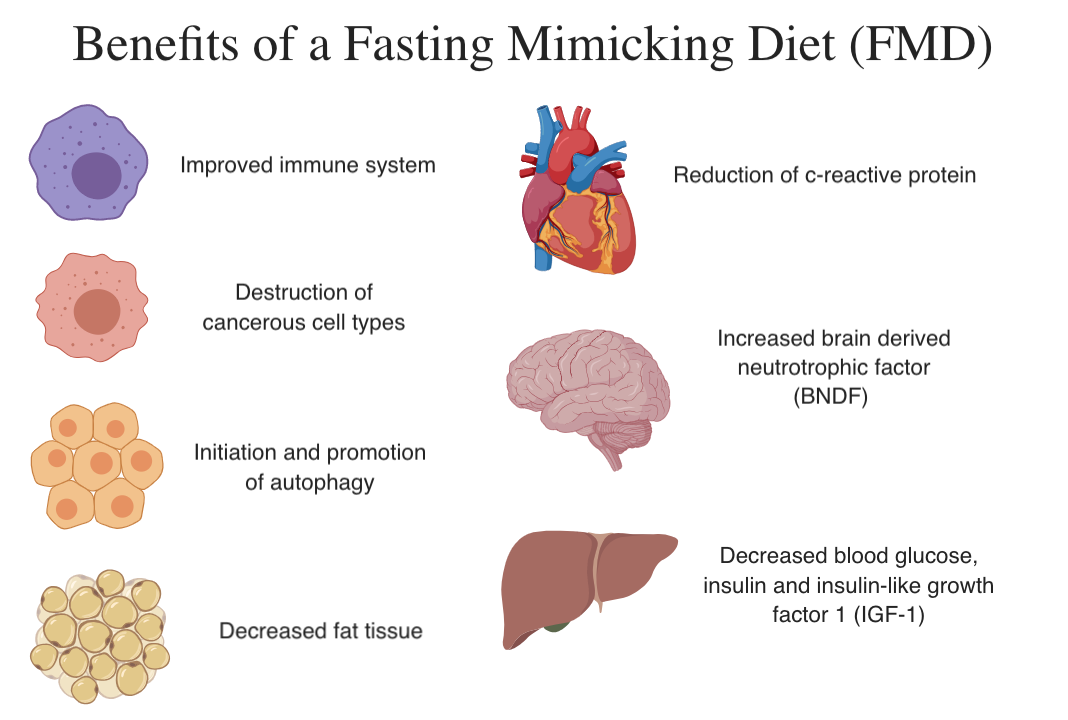18 6.1 – Introduction
Learning Objectives
- Distinguish between the different types of fasting diets
- Recognize the pros and cons of fasting diets
6.1.1 Overview of Fasting
What you eat – especially what your diet is composed of and the amount of calories you consume – affects senescence and age-related diseases associated with it. Fasting (which is one of the extreme forms of dietary restriction and focuses on the complete abstinence from all food excluding water) induces cellular and metabolic changes that affect inflammation, oxidative damage, and enhance cellular protection and energy metabolism (Brandhorst et al. 86).
There are various types of fasting – one of them being intermittent fasting (IF). IF is consistently consuming food during a specific time period in the day and fasting the remainder of the time (a very popular type of intermittent fast is the “8-16” where you consume meals only during 8 hours of the day and fast for the other 16). In previous studies, rodents were protected from cancer, diabetes, heart disease and neuro-degeneration following IF (Brandhorst et al. 86). In addition, IF and less extreme forms of dietary restrictions in humans showed beneficial effects on blood pressure, C-reactive protein (inflammation), insulin, and glucose (Brandhorst et al. 86).
Another type of fasting known as prolonged fasting (PF) is complete abstinence of food for more than 2 days but is separated by a week of normal diet. PF is seen to be an extremely effective method to protect cells and organs from a range of toxins and toxic conditions while promoting the death of different cancer cell types (Brandhorst et al. 87). PF decreases blood glucose, insulin and insulin-like growth factor 1 (IGF-1) in addition to promoting autophagy (the normal physiological process of the destruction and turnover of cells in the body for new cell formation) (Brandhorst et al. 87). However, in recent studies, PF has shown to cause a reduction in the level of white blood cells and a decrease in liver and body mass in rats (Brandhorst et al. 87).
PF is difficult to do for most of the population and due to how extreme it is, it could cause several adverse effects such as: exacerbation of previous malnourishments and dysfunctions (especially in older populations) (Brandhorst et al. 87). Therefore, there is a need for a diet that has the same effects as PF while also reducing the risk of adverse effects and burden of complete food restriction.
6.1.2 Overview of Fasting Mimicking Diet
A fasting mimicking diet (FMD) seemed to share the same positive effects of PF without the adverse effects. Instead of abstaining from consuming food at all, a FMD consists of consuming small amounts of food (low in carbohydrates, protein and calories but high in fat- this is very similar to a keto diet) lasting about 5 days on average (Brandhorst et al. 87). The key is consuming about 40% of your recommended daily calories per day. This type of fasting basically tricks your body by reducing the amount of calories enough into thinking that it’s going through a fast while obtaining the benefits of a typical fast.

Figure 6.1.1. The different types of fasting
6.1.3 Experimental Evidence
The benefits of FMD are almost identical to those seen in traditional fasting: improvement of immune system, autophagy, destruction of cancer cells, reduction of c-reactive protein (promotes inflammation and a marker for cardiovascular disease), decrease in oxidative stress, decreased fat tissue (via ketosis), increased gene expression to promote longevity, increased brain-derived neutrotrophic factor (BDNF- which helps support survival and growth of new brain neurons for better mental performance), improvement in fasting glucose, regenerative markers and healthy stem cell levels (Brandhorst et al. 87).

Figure 6.1.2. Benefits of FMD
The authors decided to test if a FMD diet for 4 days followed by a standard diet could promote the healthspan of mice.
6.1.4 Test your knowledge
